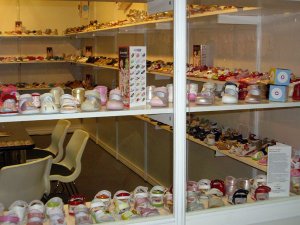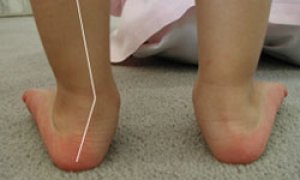The foot forms and takes on its classic appearance at the age of 5-6-7-8, sometimes later. Until the age of 5-7 years, during the period when the bones of the child's foot are forming, the diagnosis of flatfoot is not made.
A child may be diagnosed with flat feet (one of the most common diagnoses in children up to the age of 5) and varus feet. These diagnoses can be taken as an indication of a predisposition to flat feet.
Flat feet (x-shaped) – The heel is turned outwards, the foot is turned inwards. This deformity causes the inner edge of the shoe to rub. Varus foot overgrowth (o-shaped), When the foot is tilted outwards (similar to club foot). In this type of deformity, the outer edge of the shoe rubs. The disease is more likely to occur in physically weak children who are often sick. Therefore, the first thing parents should do is improve their child's general health and strengthen them.
If the child is physically active, does not complain of foot pain, and does not rub the inside or outside of the shoes too much, there is no need to worry too much about flat feet in advance. In many other countries, such diagnoses are not taken seriously at all.

Orthopedic and anatomical shoes for children. An overview of the brands
This article is about conditionally orthopedic shoes that we find in free trade. Corrective orthopedic shoes are sold in specialized stores or made to order.
Orthopedic surgeons and pediatricians recommend parents of young children to purchase orthopedic shoes for their first steps. Orthopedic shoes for children promote the correct development of the child's foot, the correct gait and the correct posture.
This is what experts explain. Properly fitted children's footwear contributes significantly to the prevention of flat feet and other foot diseases.
flat feet – deformity FootThis is a change in the shape of the foot, characterized by a prolapse of the longitudinal or transverse arch (these are two forms of flat foot that can occur together). All children under 2 to 3 years of age have a flat longitudinal arch and this is normal, This is normal as the child's foot is just beginning to form and will develop 'normal' contours and outlines around the age of 3. In an adult, the arch of the foot is concave and flexible; In a toddler, there is a fat pad in place of the arch, which creates the contours of a flat foot.

The foot forms and takes on its classic shape around the age of 5-6-7-8 years, sometimes later. Flat feet are not diagnosed until the age of 5-7, when the bones of the foot are forming.
A child can be diagnosed with flat feet (one of the most common diagnoses in children under 5 years old) and varus feet. These diagnoses can be seen as an indication of a predisposition to flat feet.
Flat feet (x-shaped) – The heel is turned outwards, the foot is turned inwards. This deformity causes the inner edge of the shoe to rub. Varus foot overgrowth (o-shaped), When the foot is tilted outwards (similar to clubfoot). In this type of deformity, the outer edge of the shoe rubs. This condition occurs more often in children who are physically weak and often ill, so parents should first carry out general health promotion and hardening.
If the child is physically active, does not complain of foot pain, and the child's shoes do not rub badly inside or out, you should not worry too much about flat feet in advance. In many other countries, such diagnoses are not taken seriously at all.
Features of Varus shoes
- The first point is the heel. The recessed heel counter and stiffened band keep the back of the foot upright.
- The second point of support is the outer part of the foot.
- The third point is the inner part of the foot.
The Azorto online shop offers children's shoes to correct or prevent forefoot deformities. This occurs when the child pushes the small toe group abnormally outwards, which is due to varus. The shoes help correct varus, or deformity, of the foot itself. It is also possible to use a non-slip insole called 'Cosolapiki', which combats varus and helps reduce pressure on the outside of the foot.
How do I choose anti-slip shoes?
This type of correction is prescribed by the doctor after treatment. When buying moisture-wicking shoes, pay attention not only to the price, but also to orthopedic recommendations:
- The shoe should have a stiff shin, sidewalls and seat.
- The heel height should be low.
- A removable insole that can be replaced with orthopedic insoles if necessary.
- A wide and stiff toe box. No depressions during compression.
- Adjustable laces or Velcro straps.
- Flexible sole, preferably made of rubber.
- Shoes for valgus deformities in children.
- Tashi Ortho Size Chart.
- Orthopedic varus shoes.
- Do orthopedic shoes help children?.
- Massage for flat feet.
- Orphea orthopedic shoes for children.
- Foot.
- How to remove a clubfoot.
